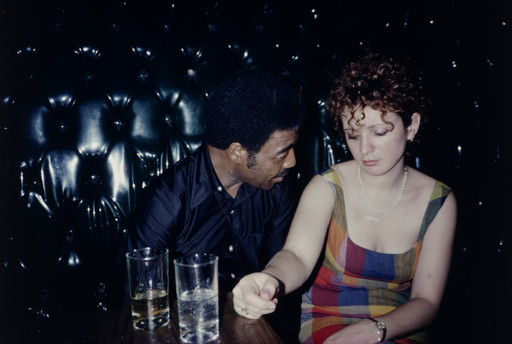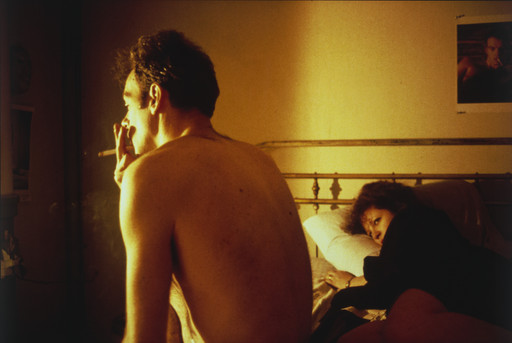THE INTERSECTION OF PHOTOGRAPHY, ACTIVISM, AND PERSONAL AND POLITICAL JUSTICE
Nan Goldin (born 1953) brought to the art world what other photographers were afraid to capture. She’s known for her photographs and reels depicting intimate scenes within underground and LGBTQ2A+ subcultures.
Laura Poitras, director of Goldin’s 2022 documentary All the Beauty and the Bloodshed, powerfully depicts the convergence of Goldin’s personal life and her fight against the Sackler family, a notorious sponsor in the art world, exposing their role in the onset of the opioid crisis.
The film portrays Goldin’s conflicted upbringing in a suburban household of shaky familial relationships and censorship. Her sister’s suicide, in particular, shapes her as an artist, and Goldin finds comfort in the camera, seeking solace in capturing the lives of those who inspired her.
1970s and 1980s New York City was where Goldin built community and art. Beauty, love, passion, madness, and raging nonconformism in underground pockets of the city are thrown together in her photographs and short reels — her most famous compilation being The Ballad of Sexual Dependency. Goldin’s work is bold and unafraid of confronting love and sexuality in all forms; and in an almost cathartic way, her subversive photos defy the white-picket fence that defined her suffocating home in American suburbia. Goldin’s constant intentionality with the camera permeates the film.

Both painful and provocative, Goldin exposes a life of death and oppression, as many of her friends and acquaintances pass away during the AIDS epidemic and opioid crisis. The documentary turns focus not only on her art, but her search for poetic justice in the name of the communities that loved her.
Her grassroots campaign, P.A.I.N (Prescription Addiction Intervention Now), was formed to raise awareness of the Sackler family’s implication in the overprescription of OxyContin, and their role in the opioid crisis. Goldin begins a fight to take down the Sackler name in notorious galleries across the world, including the Louvre, the Met, and the Guggenheim.
Angrily, but courageously, she disrupted the city with protests — whether that meant throwing pill bottles at the Met or dropping fake prescriptions from the ceiling of the Guggenheim. Erasing the Sackler name was meaningful for her both politically and spiritually, to seek retribution for the communities that gave her the ability to be free.

Goldin’s documentary is evocative, because we see how her camera lens empowered those who were outcasted and gave them a means of existing in our collective history and culture. She fought against the erasure of the Othered, and through her eyes, we know that her artistic purpose is inherently political.
Her story is a revolution against a social oppression that had its roots in a restrictive home, and everything that was once personal becomes political as Goldin seeks freedom and justice through participatory art and social change.






